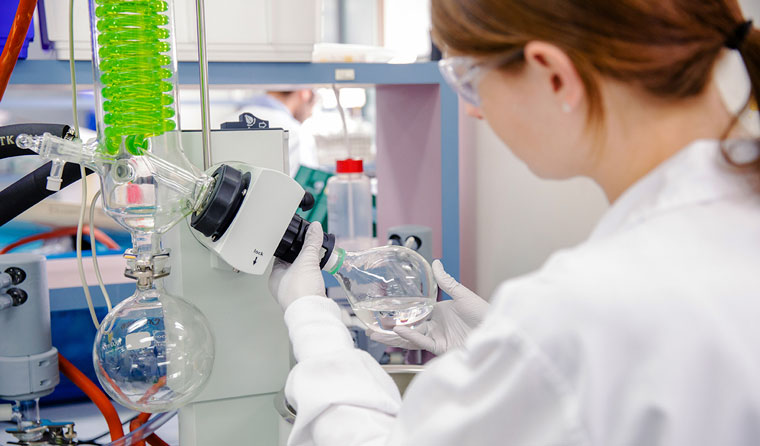News
Could sewage hold the answer to early coronavirus detection?
Australian researchers are developing an early warning surveillance system for virus hotspots, tracing SARS-CoV2 in raw sewage.
 A proof-of-concept study was completed using wastewater samples from two treatment plants in South East Queensland.
A proof-of-concept study was completed using wastewater samples from two treatment plants in South East Queensland.
Researchers from the University of Queensland (UQ) and CSIRO have successfully been able to identify genetic traces of COVID-19 in raw sewage. It has the potential to not only reveal virus hotspots, but also approximate the number of people infected.
‘This is a major development that enables surveillance of the spread of the virus through Australian communities,’ Professor Kevin Thomas, Director of UQ’s Queensland Alliance for Environmental Health Sciences, said.
A proof-of-concept study was completed last week using wastewater samples from two treatment plants in South East Queensland.
‘The wastewater samples were analysed for specific nucleic acid [RNA] fragments of the virus using RT-PCR analysis, which is used to identify a gene fragment from SARS-CoV2,’ Professor Thomas said.
Sequencing techniques confirmed RNA fragments of SARS-CoV2 that would have been shed by people infected with COVID-19.
The validated method has built on work by research groups in the Netherlands and the US.
Federal Health Minister Greg Hunt said the pilot study’s findings are ‘extremely encouraging’.
‘It has the potential to further strengthen Australia’s response to the global pandemic,’ Minister Hunt said.
‘A national program based on this work could add to the broader suite of measures our Government can use in the identification and containment of COVID-19.’
The research shows particular promise in light of recent studies in China and Italy indicating that a significant portion of those infected with the virus present as asymptomatic.
Up to 79% of all virus transmissions in China were either by those showing none to mild symptoms, while between 50–75% of carriers in Italy were asymptomatic.
‘In the United States, asymptomatic spread has likely driven the silent growth of an epidemic that was only realised when the health system began overloading,’ Professor Raina MacIntyre, a biosecurity expert at UNSW, said.
‘We’ve seen the same in Italy and Spain, which also restrict testing.’
While testing criteria in Australia has been expanded to varying degrees across all states and territories, it remains limited to those exhibiting typical respiratory symptoms.
But with pressures on testing kit numbers and limited personal protective equipment (PPE), CSIRO Chief Executive Dr Larry Marshall believes the sewage test has the potential to relieve some of the pressure on the healthcare system, particularly in vulnerable communities.
‘The hope is eventually we will be able to not just detect the geographic regions where COVID-19 is present, but the approximate number of people infected, without testing every individual in a location,’ he said.
‘This will give the public a better sense of how well we are containing this pandemic.’

Wastewater samples were analysed for specific nucleic acid (RNA) fragments of the virus using RT-PCR analysis, which is used to identify a gene fragment from SARS-CoV2.
Nobel Laureate Professor Peter Doherty told The Australian that while testing sewage may sound unattractive, it is efficient and effective.
‘It’s done regularly for testing for poliovirus and norovirus,’ the immunologist said.
‘With those two viruses at least, we can pick up one in 10,000 infected people so that would be a very good screening measure.’
Beyond its role as an early warning detection system, the test could also prove useful during the recovery phase of the pandemic.
Professor Thomas says the next step is to build the capacity to deliver a national program.
‘By showing how the method has worked in Australia, it is hoped that this research will bring together a national collaboration of government authorities, wastewater utilities, universities and other research organisations and commercial laboratories,’ he said.
Meanwhile, in what has been lauded a breakthrough for remote and rural Aboriginal and Torres Strait Islander communities, the Federal Government has committed $3.3 million to establish a rapid coronavirus remote point-of-care testing program.
Eighty-three testing sites will be developed where people will be tested using the Xpert SARS-CoV-2 test, which cuts testing times from up to 10 days to around 45 minutes.
The rapid technology detects COVID-19 infections at the point of care using a nasal swab polymerase chain reaction (PCR) test in the early phases of the illness.
With Aboriginal and Torres Strait Islander communities particularly vulnerable to COVID-19 due to a high prevalence of chronic disease, Federal Minister for Indigenous Australians Ken Wyatt said the new program would be game-changing.
‘An outbreak of COVID-19 in an Aboriginal or Torres Strait Islander community has the potential to be very serious. This testing program will help protect Indigenous Australians against the virus,’ Minister Wyatt said.
An initiative of the Kirby Institute in partnership with the Flinders University International Centre for Point of Care Testing, the program has been developed in close consultation with Aboriginal Community Controlled Health Services and states and territories.
Once fully rolled out, which aimed to be mid-May, the program will help to ensure no community is more than two to three hours’ drive from a testing facility.
Minister Hunt said this will allow local health services to respond quickly and decisively if COVID-19 is identified in a community and activate established evacuation procedures.
‘It’s vital we do all we can to protect our rural and remote Aboriginal and Torres Strait Islander communities,’ he said. ‘This world-first testing response means we can continue to stay ahead of the curve when it comes to fighting this virus.’
The RACGP has more information on coronavirus available on its website.
Log in below to join the conversation.
coronavirus COVID-19 sewage
newsGP weekly poll
Health practitioners found guilty of sexual misconduct will soon have the finding permanently recorded on their public register record. Do you support this change?